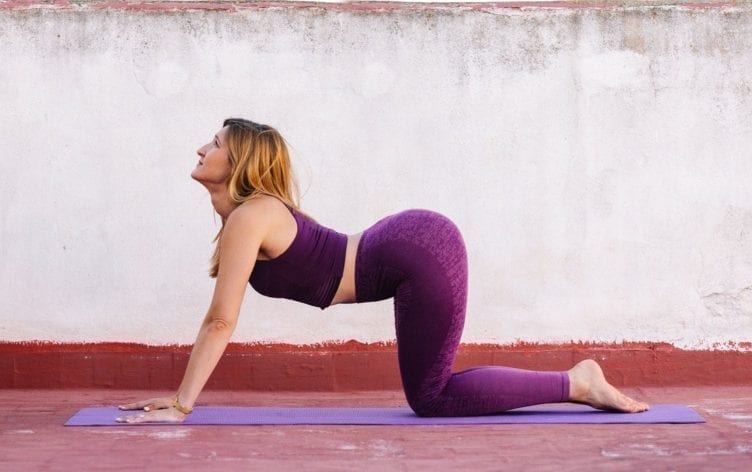Walking is one of themost underrated types of exercise. Unlike other workouts that require fancy equipment and gear, walking has a low barrier to entry and can be doneanywhere, anytime, with just a solid pair of shoes. However, it’s important to build up gradually, especially if you haven’t been very active lately, so your body can get used to the demand, explainsHelene Darmanin, physical therapist and certified strength and conditioning specialist. In addition to getting yourfeetandkneesin shape, it’s important to focus on your hips and back.
WHY PREP YOUR HIPS AND BACK?
“The hips and lower back are the site of the transfer of force from the legs up into the torso, which makes themprone to injurywhen walking,” says Darmanin. Walking may also irritate existing issues or cause new injuries in these areas, she notes.
Some issues to watch out for include:
- Lower back pain:Many people experience this at some point in their lives, and as long as it’s not a sharp pain, you’re generally safe to continue walking. Make sure to reach out to your doctor first if you have any concerns.
- Sciatica:This means something is causing symptoms (such as tingling, burning, numbness, “pins and needles”) in your sciatic nerve, the longest nerve in your body which runs from your lower back to your big toe, Darmanin explains. “Keeping the hips and low back well-supported with strong, flexible muscles can prevent sciatica symptoms,” she adds.
- Tendinopathy:This is when there’sbreakdown in the collagenof a tendon, usually due to too much stress on the area. In walkers, it can happen in the hamstring, causing pain in the hip area. “A common analogy is you want to build a callous rather than a blister,” says Darnamin. “You want to gradually introduce a particular stress, such as walking and allow your tissues to respond and get stronger.”
Still, as long as you’re listening to your body and not ramping things up too fast, taking up a walking habit is a good idea andcould actually help improve back pain.
EXERCISES TO TRY
Starting with mobility work and progressing to strength exercises, this short routine gets your hips and back primed to keep up with the demands of walking. Aim to complete it at least three times per week, ideally before walking sessions.
HIP MASSAGE
Many people head out for a walk after a long period of sitting, so this quick self-massage routine helps wake up your hips, especially your glutes, says Jill Miller, a certified yoga therapist and registered yoga teacher who createdWalking Wellalong with her colleague, Katy Bowman.
Grab a pair of physical therapy balls and the bag they came in. (Miller recommendsYoga Tune Up balls, or alternatively, two tennis balls in a sock knotted at the end.) Lie on your back with your feet on the ground and knees bent. Let your knees fall comfortably to the right so the right knee is resting on the ground and the left leg follows along. Place the pair of balls directly on the right side of your hip just to the outside of your glutes. The balls should be positioned on the ground so one ball is closer to your head and the other is closer to your feet.
Keeping both shoulders on the ground, slowly let the balls roll from the outside toward your tailbone. After you’ve done this a few times, try tensing and then relaxing your glute as you breathe deeply. Repeat as many times as you like on the right side, then switch to the left.
CAT-COW
This dynamic warmup is a great way to prepare your hips and back for walking sessions, saysNatalie Niemczyk, physical therapist and certified strength and conditioning specialist. Get onto all fours, with your hands stacked under your shoulders and your knees under your hips. Inhale, arching your back and bringing your belly toward the floor as your gaze shifts up. As you exhale, round your spine and draw your chin to your chest, tucking your tailbone under. Repeat 5–10 times.
ON-YOUR-BACK SQUATS
“Squatting, just like walking, will utilize the mobilities of all your joints,” Bowman explains. “But when restoring natural squat function, you have to break up some of the sticky relationships that are limiting the action of some of your parts, in this case, the pelvis that moves to compensate for hips that don’t.” Try this low-load version to get things moving gently.
Lie on your back, bringing your knees in toward your chest. Check to see how much your pelvis tucked when you brought your knees in. Try again, only this time, don’t let the pelvis leave the ground. Only pull your knees in to the point where you can keep your pelvis still. Repeat 10 times.
Niemczyk recommends this exercise for strengthening the hip area, which in turn supports the back. Lie on your back with your knees bent and feet on the floor. Keep your chin tucked as you curl your tailbone up off the ground, squeezing your glutes. Go as high as you can while keeping your tailbone tucked, then return to the starting position. Perform 10–15 reps total.
FIRE HYDRANTS
“This exercise works the core, the shoulders (it’ll make yourwalking arm swingmore efficient) and the glutes to help support the hips and lower back,” says Darmanin. Start on all fours with your hands underneath your shoulders and knees under your hips. Lift one knee out to the side without moving the pelvis (Think: a dog peeing on a fire hydrant), then return to the starting position with control. Complete 10 reps on one side, then switch to the other.
ALSO IN THIS SERIES
How to Get Your Feet in Walking Shape
How to Get Your Knees in Walking Shape
To become more active, try setting a simple goal to increase (and track) your daily steps. Go to“Plans” in the MyFitnessPal appand choose a 28-day step plan to learn tips to boost your activity.

